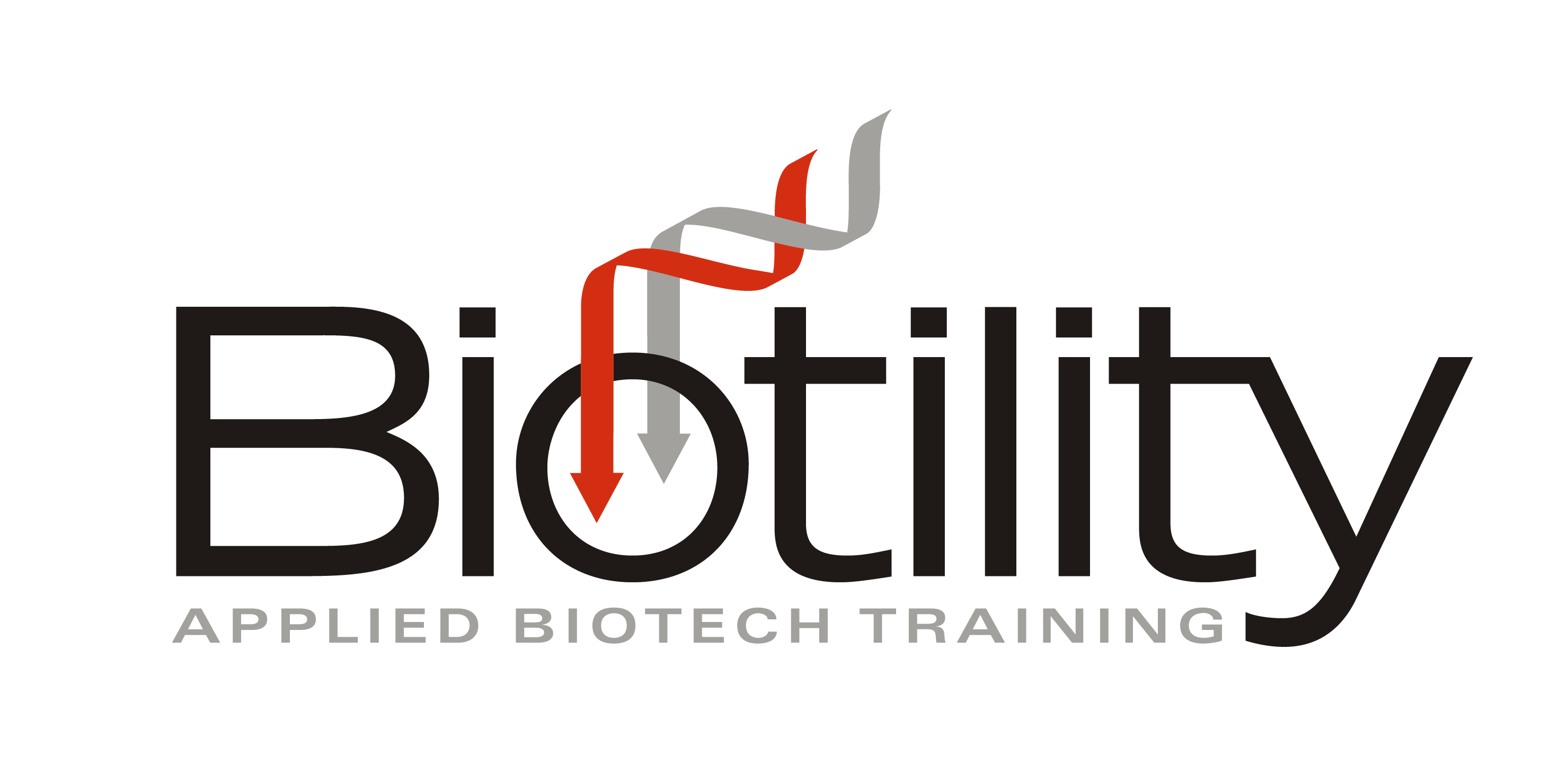Knowledge Portion Categories & Subcategories
GENERAL TOPICS IN BIOTECHNOLOGY
• Discuss current techniques used in biotechnology and their applications
• Demonstrate knowledge of regulatory agencies governing the manufacture and distribution of biotechnology-derived products
• Outline the development and regulatory approval process of biopharmaceuticals
• Understand the purpose of Good Laboratory Practices (GLPs), Good Clinical Practices (GCPs), and current Good Manufacturing Practices (CGMPs)
• Discuss the role and identify types of documents used in CGMP-compliant industries
• Outline the role of various departments in a company, including Research and Development, Quality Assurance, Quality Control, and Manufacturing
• Describe appropriate safety and workplace behaviors
• Outline the manufacturing process of biopharmaceuticals
• Describe Environmental Monitoring in a controlled space
• Discuss ethics and bioethics in the workplace and society
• Describe careers in the biotechnology field
• Describe historical applications, benefits, and advances in biotechnology
TECHNICAL SKILLS/APPLICATIONS
• Describe the process of culturing microorganisms and tissues using aseptic technique
• Differentiate between sterilization, decontamination, and disinfection
• Describe the proper use of microscopes
• Discuss methods of DNA isolation, purification, and quantification
• Contrast agarose gel versus polyacrylamide gel electrophoresis (PAGE)
• Describe how restriction enzymes are used
• Describe recombinant DNA and cloning techniques
• Discuss the transformation and transfection of model organisms
• Describe the mechanism of Polymerase Chain Reaction (PCR)
• Discuss protein expression in model organisms
• Discuss methods of molecule/protein isolation, purification, and quantification
• Understand principles of immunoassays, such as ELISA
• Explain the principles of spectrophotometry
• Demonstrate knowledge of laboratory equipment calibration and validation
• Understand the principle by which a pH meter works
• Use scientific notation, significant digits, and decimals correctly
BIOCHEMISTRY/CHEMISTRY
• Compare and contrast types of chemical bonds
• Understand the chemistry of molecules and macromolecules
• Discuss the differences between aerobic and anaerobic respiration
• Demonstrate knowledge of enzymes and reaction rates
• Describe DNA structure and function
• Describe transcription
• Describe protein structure and function
• Describe translation and gene expression
BIOLOGICAL SYSTEMS
• Explain cell theory
• Understand the general physiology of cells
• Explain the interaction between cells, and between cells and their environment
• Describe cell division (meiosis and mitosis)
• Discuss cell staining, and distinguish between Gram positive/negative cells
• Demonstrate an understanding of the immune system
• Understand the genetics of model organisms
• Describe the “central dogma of molecular biology”
WORKPLACE SAFETY & BEHAVIOR
• Identify Safety Symbols
• Exercise proper laboratory safety protocols
• Describe proper handling of biological and hazardous waste
• Identify and properly use Personal Protective Equipment (PPE)
• Derive information from Safety Data Sheets (SDS)
• Follow practices associated with regulatory compliance
• Demonstrate good documentation practices, including following Standard Operating Procedures (SOPs)
• Properly label items, including solutions, buffers, Petri plates, samples, and products
• Identify acceptable work habits
Practical Portion Categories & Subcategories
BIOTECHNOLOGY SKILLS
• Accurately measure liquids using micropipettes and serological pipets
• Accurately measure mass using electronic balances
• Demonstrate proper aseptic/sterile technique
• Demonstrate proper culturing of microorganisms
• Demonstrate proper use of electrophoresis equipment
• Properly measure and adjust the pH of a solution with a pH meter
• Properly prepare solutions, buffers, and media
• Properly perform a serial dilution
• Describe the applications and proper use of a spectrophotometer
• Describe the proper use of a centrifuge
• Use 24-hour time correctly
APPLIED MATHEMATICS IN BIOTECHNOLOGY
• Use scientific notation, significant digits, and decimals correctly
• Perform calculations for serial dilutions
• Perform calculations using dilution ratios
• Make conversions within the metric system, and use metric measurements
• Solution preparation:
– Solve Volume/Volume (V/V) and Weight/Volume (W/V) solution calculations
– Solve Molarity solution calculations
– Solve Dilution Factor calculations
• Generate a graph using collected data:
– Apply Beer’s Law
– Generate a standard curve
– Properly plot data
– Interpret data
LABORATORY EQUIPMENT
• Identify laboratory glassware and equipment
• Demonstrate proper and safe use of equipment (including, but not limited to):
– Fume hoods – pH Meters
– Biosafety cabinets – Incubators
– Microscopes – Centrifuges
– Electrophoresis equipment – Water Baths
– Spectrophotometers – Stirrers/Shakers
– Micropipettes & serological pipets – Vortexers
– Electronic balances – Autoclaves
RESEARCH & SCIENTIFIC METHOD
• Discuss good experimental design, including the proper use of controls
• Explain the scientific method
• Analyze and interpret data, including the use of statistical analysis
• Explain how to maintain a laboratory notebook
• Discuss various ways of communicating scientific research, including peer-reviewed journals, and presenting posters or talks at meetings
